Technology
Google announces Pixel 3 starting at $799
![]()
Google today took the wraps off the latest additions to its three-year-old Pixel smartphone portfolio: Pixel 3 and Pixel 3 XL, the successors to the Pixel 2 and Pixel 2 XL, respectively. Unlike 2017’s models, which were made by HTC in collaboration with LG, HTC produced both phones this time around — and it shows. Other than slight variations in size, screen resolution, and battery life, there’s little to distinguish the Pixel 3 and Pixel 3 XL from each other.
What they have in common, though, is a host of under-the-hood upgrades, including Qualcomm’s top-of-the-line Snapdragon 845 system-on-chip, dual front cameras, Android 9.0 Pie, and a Google-designed Pixel Visual Core image coprocessor. And that’s just the tip of the iceberg.
Here’s everything you need to know about the Google Pixel 3 and Pixel 3 XL.
A familiar design

Above: The Google Pixel 3 XL in Clearly White.
You could be forgiven for mistaking the Pixel 3 and Pixel 3 XL for their previous-gen counterparts. With their two-tone, minimalist aesthetics, they’re very much cut from the same cloth.
Let’s get the major differences out of the way first. The Pixel 3 measures in at 5.73 x 2.69 x 0.31 inches, while the larger Pixel 3 XL is 6.2 x 3 x 0.31 inches. Predictably, the Pixel 3 has a smaller, flexible OLED screen — 5.5 inches measured diagonally — compared to the Pixel 3 XL (6.3 inches), and its screen has lower resolution (2,160 x 1,080 versus 2,960 x 1,440; 440 pixels per inch versus 522). With one last exception, however — a small notch in the top-middle portion of the 3 XL screen — the two smartphones are nearly identical in appearance.
Around the back of the Pixel 3 and Pixel 3 XL, a glass panel extends the full length of the rear cover, encircling a single Sony IMX 12.2-megapixel camera (with laser autofocus and dual pixel phase detection) and an LED flash. It’s interrupted only by a fingerprint sensor and an embossed “G,” Google’s shorthand logo.
There’s more to the fingerprint sensor than meets the eye. Google calls it Pixel Imprint, and claims it becomes more accurate over time as it reads your finger. It also does double duty as a notifications shortcut: Swiping down on the sensor reveals Android’s notifications shade.

Above: The Google Pixel 3 XL’s all-glass rear cover.
Flip the Pixel 3 and 3 XL around and you’ll see the display bonded to subtly curved glass shielding. (Both phones are IP68 certified, meaning they’ll survive in up to five feet of water for 30 minutes.) Beneath it is one of two front-firing stereo speakers that are 40 percent louder than last year’s models, and opposite it near the top of the phone is a proximity sensor, an ambient light sensor, and dual front-facing cameras.
The 8.1-megapixel cameras, one of which is a wide-angle lens with a variable f/1.8 and f/2.2 aperture, leverage the depth delta between them to capture portrait mode selfies — i.e., shots that ever-so-slightly blur the background while maintaining lock focus on the foreground (an effect known as bokeh) — Google says are of superior quality to those generated by software alone. And that’s not all they can do; a new Pixel 3-exclusive face-retouching feature in the Google Camera app lets you apply skin-smoothing filters like “Natural” and “Soft,” and zoom in.
Rounding out the Pixel 3 and Pixel 3 XL’s accouterments are a power button and a volume rocker on the left-hand side, a USB Type-C port on the bottom, and circular cutouts around the phone’s frame for noise-canceling microphones. As with the Pixel 2 and Pixel 2 XL, there’s no 3.5 audio jack in tow, but there are included wired Pixel Bud earbuds and an adapter.
Last but not least, Active Edge — touch-sensitive right and left bezels that trigger the Google Assistant when squeezed — makes a triumphant return on the Pixel 3 and Pixel 3 XL, and it’s slightly more versatile than before: A hard grip during an incoming call silences it.
Killer cameras

Above: The Google Pixel 3 XL’s rear camera.
The Pixel 2 and Pixel 2 XL are widely regarded to have the best smartphone cameras on the market, and the Pixel 3 and Pixel 3 XL appear poised to carry the mantle.
New features on tap this year are Top Shot, Photobooth, Super Res Zoom, and Night Sight.
Top Shot captures a burst frame before and after you tap the shutter button, and uses on-device AI to pick the best shot — taking into account things like smiles, open eyes, and gazes. In addition, it decreases “unimportant” parts of the image (to roughly 3 megapixels) to save on storage space.
Photobooth, meanwhile, is meant to be hands-off. The idea is that you set the Pixel 3 and Pixel 3 XL somewhere, and it taps machine learning to automatically capture the “best” pictures — e.g., when someone smiles, sticks out their tongue, makes a face, or winks.
Super Res Zoom is fairly self-descriptive. It uses AI — and a combination of burst photos — to improve the quality of zoomed-in images.
Night Sight might be the highlight of the bunch. It boosts the brightness of ultra-dark images using — you guessed it — AI. The results look really impressive.

Above: The Google Pixel 3 and Pixel 3 XL’s Playgrounds feature.
There’s also a new mode in the Google Camera — Playground — that takes advantage of Google’s AR Core framework in Android to “bring more powerful AR experiences” to you, namely in the form of superheros, stickers, and captions that animate around you and appear to interact with the physical world. Playground — in addition to Night Sight — will come to older Pixel devices in the weeks ahead.
Other Google Pixel 3 and Pixel 3 XL camera features of note are an autofocus mode that tracks subjects in view, eliminating the need to manually lock focus; Google’s Motion Photos feature, which records a brief video in addition to a photo at shoot time; and slow-motion video.
Google’s outstanding HDR+ mode is present and accounted for. It captures a series of photographs at varying exposures — underexposed (dimly lit), overexposed (brightly lit), and levels in-between — and generates a composite image, ensuring that details and highlights aren’t lost during post-processing.

Above: Testing the Google Pixel 3 XL’s portrait mode.
So too is portrait mode, which taps computational photography techniques to produce bokeh. It works by filtering out facial features, clothing, and skin in portrait photos with a machine learning model that detects pixel-level differences in color and edges. The resulting stencil-like cutout — “segmentation mask” — is used to differentiate the foreground subject from the background.
Next, in order to mimic the way light behaves in the real world and generate a realistic blur, a depth map is produced by combining imaging data from two sets of pixels on the phones’ camera sensors. The Pixel 3 and Pixel 3 XL’s cameras have Dual Pixel Auto Focus (DPAF) technology; each pixel is divided into two small sub-pixels that capture light from a slightly different angle, which is used to determine the distance of objects from the camera.
Also worth highlighting is Google Lens, which works in real time on the Pixel 3 and Pixel 3 XL. (On previous Pixel devices, it had to be launched from a shortcut or within the Google Photos app.) The growing list of things it can detect in-frame include furniture, clothing, books, movies, music albums, video games, landmarks, points of interest, notable buildings, Wi-Fi network names and passwords, beverages, celebrities, home decor items, and more. Perhaps most useful of all, it can automatically extract phone numbers, dates, and addresses from business cards and add them to your contacts list.
On the video side of things, the Pixel 3 and Pixel 3 XL’s rear camera captures videos in up to 4K resolution at 30 frames per second. By comparison, the front-facing cameras top out at 1,080p.
Powerful hardware

Above: The Google Pixel 3 XL.
The Pixel 3 and Pixel 3 XL are no less well-endowed under the hood than they are above glass.
Both pack Qualcomm’s Snapdragon 845 system-on-chip, the same silicon inside Samsung’s Galaxy Note 9 and the recently announced LG V40. According to the chipmaker, the octa-core 10nm processor, which consists of four Cortex-A75 performance cores clocked up to 2.8GHz and four Cortex-A55 efficiency cores clocked at 1.7GHz, can achieve about 30 percent better performance and 25 to 30 percent better power efficiency than the Snapdragon 835 in the Pixel 2 and Pixel 2 XL. The accompanying Adreno 630 graphics chip, meanwhile, is a quoted 30 percent faster and 30 percent more power-efficient than the Snapdragon’s 835, with 2.5 times the display throughput.
It remains to be seen whether those claims hold water in the real world. But suffice it to say, the Pixel 3 and Pixel 3 XL promise to be quite a bit faster than the outgoing models.
It’s a bit of a mixed bag on the battery front. The Pixel 3 has a 2,915mAh battery, which clocks in at about 200mAh larger than the Pixel 2’s pack (2,700mAh). But the Pixel 3 XL’s battery is a tad bit smaller: It’s 3,430mAh (down from 3,520mAh). The good news, though, is that both are compatible with wireless Qi charging accessories, including the new Pixel Stand. And they both support fast charging up to 10W.
![]()
Some folks are bound to be disappointed by the RAM. Both phones have 4GB, the same capacity as the Pixel 2 and Pixel 2 XL — albeit LPDDR4X instead of LPDDR4. LPDDR4X has a higher maximum bandwidth and consumes less power than LPDDR4, but with handsets like the Galaxy Note 9 pushing the 6GB RAM barrier, the Pixel 3 and Pixel 3 XL don’t exactly stand out from the crowd in this respect.
Where both do stand out, however, is with respect to imaging processing. The Pixel 3 and Pixel 3 XL sport the Pixel Visual Core (PVC), a Google-designed coprocessor that can crunch trillions of operations per second while consuming dramatically less power than a conventional smartphone processor. It accelerates Google’s HDR+ feature; other benefits include Zero Shutter Lag (ZSL), which eliminates the delay between triggering the phone shutter and when the photo is actually recorded, and digital zoom enhanced with Rapid and Accurate Image Super-Resolution (RAISR) technologies, which uses machine learning to produce high-quality versions of low-resolution images.
As for storage, the Pixel 3 and Pixel 3 XL make do with 64GB or 128GB (depending on the model). An 802.11 a/b/g/n/ac 2×2 MIMO chip supplies Wi-Fi connectivity, and a bevy of sensors — including an accelerometer, gyrometer, magnetometer, and barometer — orient the phones in three-dimensional space. (As in previous Pixel and Nexus devices, they’re managed by the Android Sensor Hub, a low-level system that powers sensor fusion and activity and gesture recognition.) There’s NFC onboard for contactless payment functionality (via Google Pay or the platform of your choice); Bluetooth 5.0 Low Energy for accessories pairing; and GPS and GLONASS for granular positioning.
Also worth noting: The Pixel 3 and Pixel 3 XL have an eSIM (Embedded SIM). As with their predecessors, the phones can be provisioned to a network without the need to swap a physical SIM. Network profiles are downloaded automatically via Google’s eSIM Manager app on the Play Store.
And they have the Titan Security chip, an on-device component that Google says borrows from “server” security tech to protect sensitive data.
Android 9 Pie, Google Lens, and Pixel Tips

The Pixel 3 and Pixel 3 XL ship running Android 9.0 Pie, the latest version of Google’s Android operating system. Google officially announced Pie in early August, but in case you’re in need of a refresher, here’s a list of highlights:
- Adaptive Battery: Android Pie uses artificial intelligence to improve your phone’s battery life. How? By predicting which apps you’re most likely to launch over the next few hours, and by restricting the degree of background processing and networking those you aren’t using can perform. It happens on-device and improves over time as it learns your usage habits. (Google claims it can reduce CPU app wake-ups by 30 percent.)
- Adaptive Brightness: Just as Adaptive Battery learns your app usage behavior over time, Adaptive Brightness keeps tabs on how you adjust the screen brightness in various contexts and learns to make those adjustments automatically.
- Gesture Navigation and Redesigned Recent Apps Switcher: Android Pie adopts a new gesture-based navigation scheme. Swiping up from the home button opens a carousel of recent apps (or the app drawer), and swiping to the left surfaces the previous app. (Alternatively, sliding the home button backward and forward scrolls through the aforementioned carousel.) Meanwhile, the new multitasking screen lets you quickly launch into split screen, view an app’s info, or even copy and paste content from one app’s preview window to another.
- Makeup: Need to quickly touch up a screenshot? Makeup lets you crop, doodle over, and edit snapshots of your phone’s screen before you save or share them.
- App Slices and App Actions: What’s an app slice? In essence, it’s an interactive snippet that pulls in content from outside of an app. For example, searching for Lyft in Google Search might show results sourced from the Lyft app, which would launch into said app if tapped. App Actions, on the other hand, are shortcuts to in-app tools informed by contextual clues, including the time of day and your location.
- Digital Wellbeing: Digital Wellbeing, which launched in beta this summer, helps you keep track of your smartphone usage — and gently encourages you to pocket that phone every once in a while. A handy dashboard shows how much time you’ve spent in various services and apps, and the number of notifications those apps and services sent you throughout the day. (Third-party developers can add deep links into their own Digital Wellbeing sections.) Shortcuts within Digital Wellbeing allow you to quickly enable Do Not Disturb mode, set timers on apps, and enable Wind Down mode, which slowly transitions the phone’s screen to grayscale over a predefined window of time.
- Simplified Do Not Disturb: Placing your phone face down on a table enables Do Not Disturb mode.
- Rotation controls: Whenever an app shifts from landscape to portrait orientation or vice versa, a nifty rotation control button lets you switch it back at will.
- Improved security: Android Pie blocks apps running in the background from accessing the microphone, camera, and other sensors, and requires them to ask permission before running a Wi-Fi scan. HTTP connections are blocked by default; Pie requests apps use HTTPS connections instead. And there’s a new permissions category for apps that access call logs.
- Improved Bluetooth connectivity: Android 9 Pie allows you to pair up to five Bluetooth devices and switch between them seamlessly. Moreover, it remembers the volume level for paired devices, and intelligently routes incoming phone calls to accessories capable of handling them (i.e., earbuds with microphones).
- Tweaked volume controls: In Android Pie, the volume buttons adjust media-playback volume by default.
- Better notifications management: The new notifications screen shows a list of apps (sorted from the past seven days or “most frequent”) that have recently displayed a notification, and lets you disable the ones you’d rather not hear from again. Separately, Android Pie also suggestions muting apps you routinely dismiss.
- A simplified Accessibility Menu: Android Pie’s Accessibility Menu, when enabled, provides one-tap access to the Google Assistant, app switcher, and more.
- A magnifying glass for text selection: When you press and hold your finger over text (in order to copy it), a zoomed-in view of the words you’ve highlighted appears.
- Lockdown Mode: When flipped on from the power menu (accessed by long-pressing your phone’s power button), Lockdown closes out the phone’s lock screen, hides notifications, and prompts you for a PIN, pattern, or passcode.
That’s all in addition to the Google Assistant, Google’s intelligent voice assistant that can summon an Uber, pull up a podcast, perform a search for local businesses, and control more than 5,000 smart home devices from 400 brands. And like Pixel devices before them, the Pixel 3 and Pixel 3 XL ship with exclusive software features that aren’t available on other Android phones.
One is Pixel Tips, an app with tutorials that break down headlining Android features like gesture navigation, quick settings in the notifications shade, and Do Not Disturb mode. Also new: a call screening feature — aptly named Call Screen — that transcribes phone calls in real time so that you can decide whether or not to pick up; and the launch of Google Duplex, Google’s AI that can call up hair salons and restaurants and make reservations on your behalf.
Google Duplex will roll out city-by-city starting next month. Both Duplex and Call Screen are coming to older Pixel phones in addition to the Pixel 3 and Pixel 3 XL.
Another feature is Now Playing, which uses on-device machine learning to listen for tunes in the background and surface metadata on the phone’s lock screen when it finds a match. It’s improved on the Pixel 3 and Pixel 3 XL: it can now identify “millions of songs,” up from tens of thousands. (That’s thanks to an update Google rolled out in September.)
Yet another Pixel-exclusive benefit? Unlimited uncompressed photo and video storage in Google Photos. Normally, free-tier users have to contend with a 15GB file cap across Photos, Gmail, and Google Drive, but Pixel owners can upload as many high-resolution pics and clips as their heart desires (until January 2022, at least).
Last but not least: On the Pixel 3 and Pixel 3 XL, Android’s ambient display mode now supports wallpapers. They appear when a notification comes in, and disappear after a minute by default
Accessories and availability
The Pixel 3 and Pixel 3 XL come with few extras, chiefly the aforementioned wired Pixel Buds. Also included in the box is a Quick Switch Adapter, which makes it easier to transfer data from older handsets to the Pixel; a 3.5mm-to-USB-Type-C adapter; and a wall adapter.
They ship alongside the $79 Pixel Stand, a vertical dock with a round base that conceals a USB-C port. It supports fast wireless charging (9V ⎓ 2A and 5V ⎓ 3A) and enables Google Assistant functionality a la the recently introduced Show Mode on Amazon’s Fire HD 8 and Fire HD 10 tablets, including (but not limited to) a slideshow feature that cycles through pics in your Google Photos gallery. It’s sold separately, but at least one carrier — Canada’s Freedom Mobile — is offering it as a preorder bonus.
Gallery: Google Pixel Stand
They’re available in at least three colors: Just Black, Clearly White, and Not Pink. Preorders start today in Australia, Germany, Italy, Spain, the U.S., Canada, India, Japan, Taiwan, France, Ireland, Singapore, and U.K. The phones will be available on Verizon October 18.
Here’s the pricing:
- Pixel 3 64GB: $799
- Pixel 3 128GB: $899
- Pixel 3 XL 64GB: $899
- Pixel 3 XL 128GB: $999


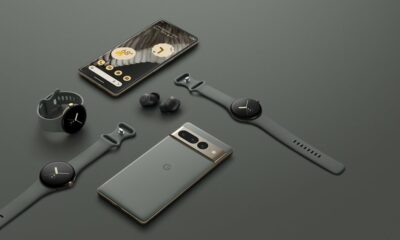
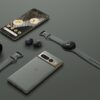


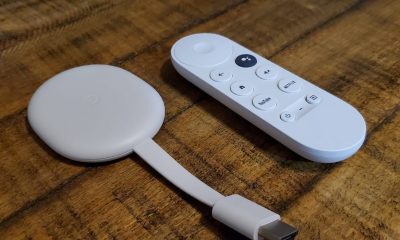
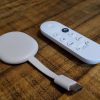






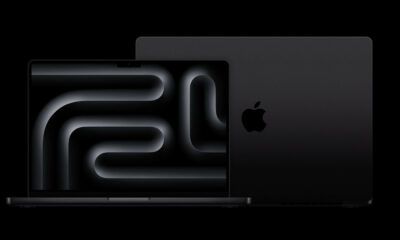

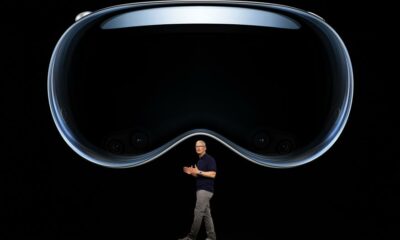



Recent Comments